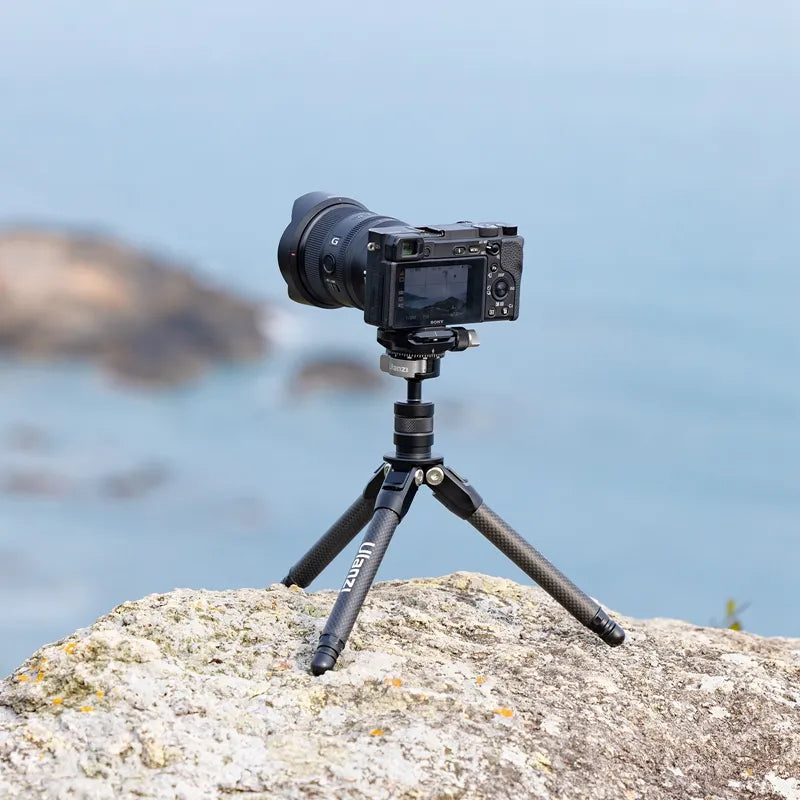Introduction to Time-lapse Photography in Manufacturing Plants
Time-lapse photography is a powerful tool for capturing the dynamic processes within manufacturing plants. By condensing hours, days, or even weeks of activity into a short video, it provides a unique perspective on production workflows, machinery operations, and overall efficiency. However, achieving high-quality time-lapse footage requires stability, and that's where tripods come into play.

Why Use Tripods for Time-lapse Photography?
Tripods are essential for time-lapse photography because they provide the stability needed to capture consistent, clear images over extended periods. In a manufacturing plant, where vibrations and movements are common, a sturdy tripod ensures that your camera remains steady, preventing blurry or shaky footage. Additionally, tripods allow for precise positioning, enabling you to frame your shots perfectly and maintain a consistent viewpoint throughout the time-lapse sequence.
Choosing the Right Tripod for Manufacturing Plants
Selecting the appropriate tripod for time-lapse photography in a manufacturing environment involves considering several factors. First, the tripod must be robust enough to withstand the industrial setting. Look for tripods made from durable materials like aluminum or carbon fiber. Second, the tripod should have adjustable legs to accommodate uneven surfaces and provide flexibility in positioning. Finally, consider the tripod's load capacity to ensure it can support your camera and any additional equipment, such as sliders or motion control devices.
Setting Up Your Tripod for Optimal Results
Proper setup of your tripod is crucial for achieving the best time-lapse results. Start by finding a stable surface to place your tripod. If the ground is uneven, adjust the legs to ensure the tripod is level. Use a spirit level if your tripod has one, or attach an external level to your camera. Once the tripod is stable, securely mount your camera and adjust the head to frame your shot. Tighten all knobs and locks to prevent any movement during the time-lapse sequence.
Tips for Capturing Effective Time-lapse Footage
To capture compelling time-lapse footage in a manufacturing plant, consider the following tips:
- Plan Your Shots: Identify key areas or processes you want to capture. This could include assembly lines, robotic arms, or material handling systems.
- Use Intervalometers: An intervalometer allows you to set the time intervals between shots, ensuring consistent capture rates. This is especially useful for long-duration time-lapses.
- Lighting: Manufacturing plants often have varying lighting conditions. Ensure your camera settings can handle changes in light, or use additional lighting to maintain consistency.
- Test Runs: Conduct test runs to fine-tune your settings and ensure everything is working correctly before committing to a long time-lapse session.
Post-Processing Your Time-lapse Footage
After capturing your time-lapse sequence, the next step is post-processing. Use software to compile the individual frames into a video. Adjust the playback speed to achieve the desired effect, and consider adding music or annotations to enhance the final product. Post-processing also allows you to correct any exposure or color issues, ensuring your time-lapse footage is polished and professional.
Conclusion
In conclusion, using tripods for time-lapse photography in manufacturing plants is essential for capturing high-quality, stable footage. By selecting the right tripod, setting it up correctly, and following best practices for time-lapse photography, you can create compelling visual narratives that showcase the intricate processes within your manufacturing environment. Whether you're documenting production efficiency, showcasing new machinery, or creating marketing materials, a well-executed time-lapse can provide valuable insights and impressive visuals.